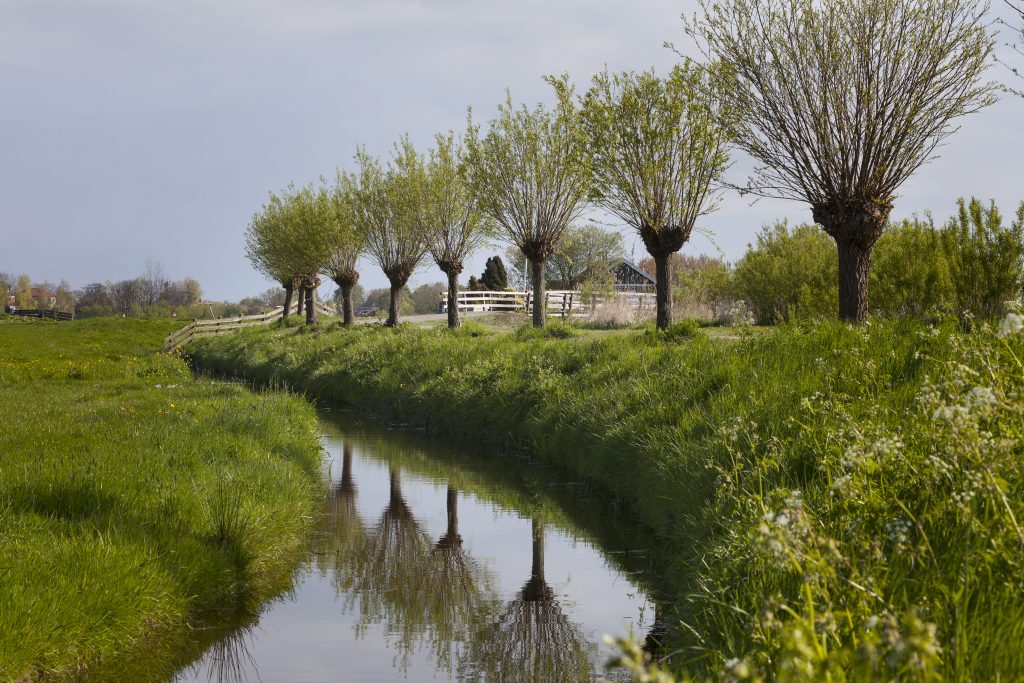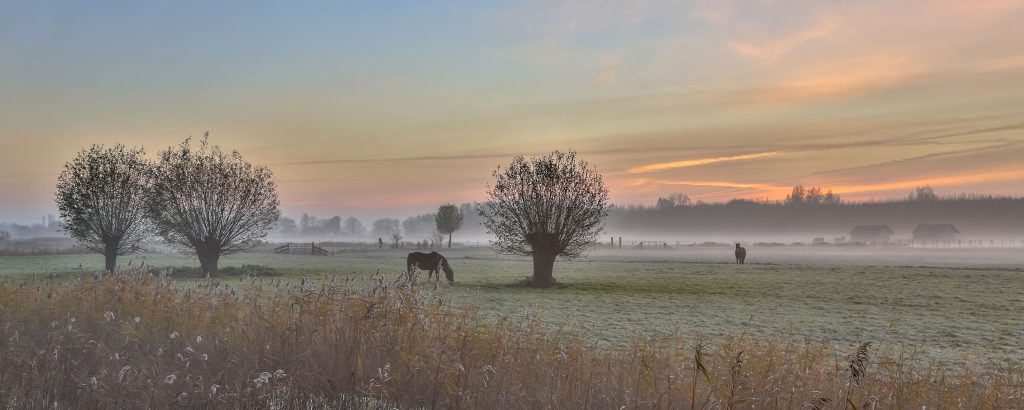When it comes to arboriculture, there is so much terminology thrown about and it can often get confusing. For example, not many people know that arboriculture essentially means ‘tree-related stuff;’ or that horticulture means ‘garden or landscaping-related stuff’.
It’s a minefield of terminology, so it’s no wonder why many people get lost when they start tumbling down the rabbit hole that is, tree-care.
In this article, we’re going to look at the term pollarding in particular. What does it mean when a tree is pollarded?

What does pollarding mean?
The official definition of the term pollarding, according to Oxford Languages, is:
- “cut off the top and branches of (a tree) to encourage new growth at the top”.
Horticulture Magazine goes one better with the definition:
- “when young trees and shrubs are cut to the main stem or trunk, ultimately controlling the height of the plants. This is different from coppicing because the trees and shrubs are not cut at ground level, but much higher, usually around six feet. Pollarding maintains a desired height for the plants, reduces shade, and defines the plants’ shape. This method is also employed to prevent tall trees from obstructing electrical wires and phone lines when planted near streets.”
What does it mean when a tree is pollarded?
So, what does it mean when a tree is pollarded? We have some fairly interesting definitions above, but let’s explore it a little deeper so you can decide as to whether pollarding is a technique that you would like to adopt with the trees on your property.
- When tree-care professionals pollard a tree, they begin by cutting the central leader of the tree.
- Following that, they will cut all of the branches that are approximately the same height (this process helps to successfully shorten the crown of the tree.
- The aim is to keep the height of the tree at six feet above the ground (at least) promoting safety and keeping animals from grazing.
- Pollarding can also be used to remove the lower limbs and any limbs that cross one another (which is a standard practice in tree pruning).
- After a tree has been freshly pollarded, it can look rather daft. Not so dissimilar to when you shave a cat! However, after a short while, there will be a thick and healthy crown growing back in its place (this is why pollarding is typically aimed at younger trees, as older trees can take a while for their crowns to fill in with green).
- Pollarding is also better suited to dormant trees, which naturally vary from species to species depending on the time of year).
- Pollarding can also make the tree healthier and less susceptible to certain fungi and diseases.
What species of tree can be pollarded?
If you are interested in having your tree pollarded, you must be mindful of the species, the space around your tree, and its age. Again, it’s much better to pollard a young tree/shrub, as opposed to an older one. Here’s a look at some of the most commonly pollarded tree species:
- Ash
- Lime
- Elm
- Elder
- Gum
- London Plane
- Mulberry
- Oak
- Tulip
Bear in mind that each tree should be cared for on a case-by-case basis. Just because your tree may appear on this list, it doesn’t necessarily mean that it is suitable for being pollarded.
If you aren’t sure, you can consult your local tree care experts, such as Lakeside Trees and Stumps for more information and advice.

Why do we pollard trees?
Another common question is: “why do we pollard trees?” And there are a number of answers to this question. For example, some people pollard their trees because:
- They are unsafe in smaller spaces and need to be reduced in size
- They want their trees to fit their landscape more appropriately
- The tree might not be growing in a way that is safe or sustainable
Historically speaking, trees that were pollarded and coppiced would promote more branches, allowing quick growth of wood for use as kindling and in basket-weaving.
Today, pollarding can be used to prevent trees from branching too close toward electric wiring and/or obstructing public pathways and vehicular traffic (e.g., when a bus drives down an avenue and ultimately has to contend with the constant rapping of branches against its windows).
Pollarding can also be adopted to reduce larger trees and cut down on the shade that they cast.
When is it good to consider the pollard technique?
So, when is a good time for you to consider pollarding as a tree-care technique?
- A good time to start is when your trees are either growing too tall or appear to be unsafe and structurally temperamental due to being far too top-heavy.
- You may also wish to consider pollarding if your trees are growing dangerously close to certain utilities and structures.
- It is also important to remember the distinction between topping and pollarding (again, pollarding is used exclusively for younger trees).
Other important things to note about pollarding
- Once you begin pollarding a tree, you should keep up with it regularly (every two to five years—consult an arborist if you aren’t quite certain about the frequency at which your tree should be pollarded).
- Tree pollarding is a complicated technique that can be difficult to pull off as an amateur, as such, it might be worth hiring the professionals to handle this for you instead.
Conclusion
So, in conclusion, pollarding is a type of pruning technique dedicated to younger trees, and intended to keep them at a manageable height (among other reasons). We hope that this article has been helpful to you and wish you the best of luck with the care and maintenance of your trees.



